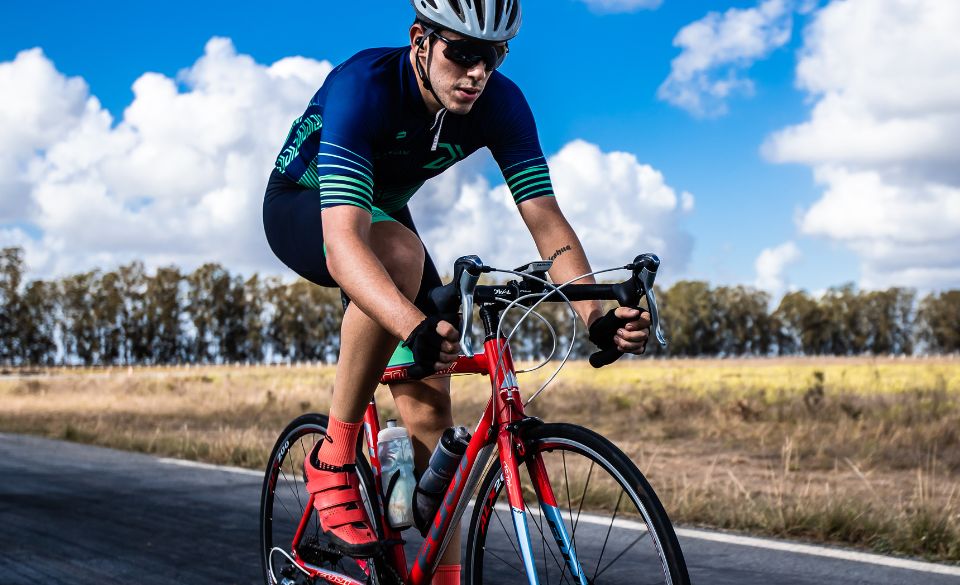
Does Cycling Build Glutes? Unlocking the Power of Your Glute Muscles on the Bike
Page Contents
If you’re a cycling enthusiast looking to sculpt and strengthen your glute muscles, you may wonder: does cycling build glutes? While cycling is renowned for its cardiovascular benefits and lower-body conditioning, the specific impact on glute development can be a topic of debate. In this blog post, we’ll explore the relationship between cycling and glute activation, debunk some myths, and uncover the truth about building strong glutes on the bike. So, hop on your saddle and let’s dive in!
Understanding Glute Activation in Cycling: The Powerhouse Muscles at Work
Before we delve into whether cycling builds glutes, let’s first understand the role of the glute muscles in cycling. The glutes, comprised of the gluteus maximus, gluteus medius, and gluteus minimus, are among the largest and strongest muscles in the body. They play a vital role in generating power and stability during various movements, including cycling.
While cycling primarily engages the quadriceps, hamstrings, and calves, the glutes also contribute to the pedal stroke. The gluteus maximus, in particular, plays a key role in hip extension, generating power during the downstroke of the pedal. Additionally, the gluteus medius and minimus help stabilize the hips and maintain proper alignment during the pedal stroke.
The Truth about Glute Activation in Cycling: Balancing Muscular Engagement
When it comes to the direct impact of cycling on glute development, it’s important to understand that cycling is primarily an endurance-based activity. While it can provide a cardiovascular workout and strengthen the lower body, the specific level of glute activation varies among individuals and depends on factors such as cycling technique, bike fit, and muscle imbalances.
Studies have shown that glute activation in cycling can vary based on factors such as cadence, resistance, and pedaling technique. For instance, a study published in the Journal of Electromyography and Kinesiology found that higher cadences tend to elicit greater glute activation. Another study in the Journal of Applied Biomechanics showed that standing climbs and out-of-saddle efforts engage the glute muscles more intensely.
While cycling alone may not be the most targeted method for glute hypertrophy, incorporating additional exercises that specifically target the glutes can complement your cycling routine and promote balanced muscular development.
Complementing Cycling with Glute-Focused Exercises: A Well-Rounded Approach
To enhance glute development and create a well-rounded lower body, it’s beneficial to incorporate glute-focused exercises into your training regimen. While cycling provides a cardiovascular workout and engages multiple muscle groups, adding targeted glute exercises can help strengthen and shape the glutes further. Consider the following exercises:
1. Squats: Squats are a compound exercise that engages the glutes, quads, and hamstrings. Focus on proper form and depth to maximize glute activation.
2. Lunges: Lunges target the glutes, quads, and hamstrings while improving balance and stability. Incorporate forward lunges, reverse lunges, and walking lunges into your routine.
3. Glute Bridges: Glute bridges specifically target the gluteus maximus. Lie on your back, bend your knees, and lift your hips off the ground while squeezing your glutes.
4. Hip Thrusts: Hip thrusts isolate and activate the glutes. Sit with your upper back against a bench, place a barbell or weight across your hips, and drive your hips up while contracting your glutes.
By incorporating these exercises alongside your cycling routine, you can create a well-rounded lower body training program and enhance glute development. Remember to focus on proper form, gradually increase resistance and intensity, and listen to your body’s cues to prevent injury and promote optimal results.
The Benefits of Strong Glutes: Beyond Aesthetic Appeal
While the aesthetic appeal of strong and toned glutes is undeniable, their importance goes beyond appearances. Developing strong glutes can have significant benefits for cyclists, including:
1. Power Generation: Strong glutes contribute to the generation of power and force during the pedal stroke, allowing you to push through each rotation with greater efficiency and speed.
2. Stability and Injury Prevention: Well-developed glutes help stabilize the hips and maintain proper alignment, reducing the risk of imbalances and potential injuries during cycling.
3. Improved Climbing Performance: Strong glutes play a crucial role in standing climbs and out-of-saddle efforts, providing the power and stability necessary for conquering challenging climbs.
4. Enhanced Overall Performance: Strengthening your glutes can improve your overall cycling performance, enabling you to ride longer, maintain better form, and push through fatigue more effectively.
By focusing on glute development and incorporating targeted exercises alongside your cycling routine, you can enhance your cycling performance, reduce the risk of injuries, and experience a more efficient and powerful pedal stroke.
Conclusion
While cycling alone may not be the most targeted method for building glutes, it still engages and activates these powerhouse muscles to a certain extent. The level of glute activation varies among individuals and depends on factors such as cycling technique, cadence, and resistance. However, to achieve well-rounded lower body development and maximize glute strength, incorporating glute-focused exercises into your training regimen is beneficial.
By complementing your cycling routine with exercises like squats, lunges, glute bridges, and hip thrusts, you can specifically target and strengthen your glutes. This well-rounded approach promotes balanced muscular development, enhances power generation, improves stability, and contributes to overall cycling performance.
Remember, building strong glutes takes time and consistency. Listen to your body, focus on proper form, gradually increase resistance, and incorporate rest and recovery days into your routine. With dedication, patience, and a balanced approach, you’ll unlock the power of your glute muscles and take your cycling to new heights. So, saddle up, activate those glutes, and enjoy the ride!



